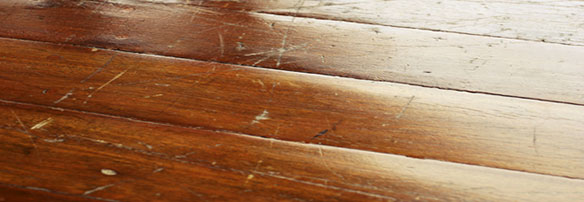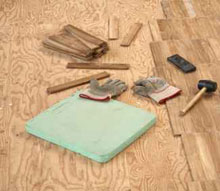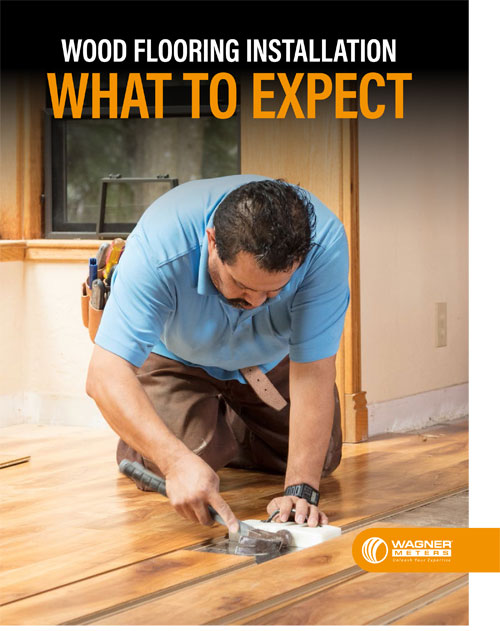Softwood Floors Just Aren’t as Hard
Wood lovers sometimes opt for the softwoods of the coniferous trees when installing wood floors. Evergreen trees in the northern hemisphere, such as spruce, cedar, fir (including Douglas-fir) are some softwood species which appeal to those who desire a softer spring beneath their steps. Pine is the most popular softwood for installing wood floors.
 However, it is crucial to understand the basic differences between hardwood and softwood in order to effectively develop a strong and durable wood floor. It is very likely that a variety of wood species will be used in the process of installing wood floors.
However, it is crucial to understand the basic differences between hardwood and softwood in order to effectively develop a strong and durable wood floor. It is very likely that a variety of wood species will be used in the process of installing wood floors.
For example, some people may opt to use softwood plywood or OSB as a wood subfloor with hardwood flooring specified as the surface layer. Softwood pine flooring can also be used as a wood subfloor in some applications. Engineered flooring combines several different wood species layered into the flooring substrate. Plywood, which is often used as a subfloor, also combines multiple wood layers with varying performance traits. For traditional plank lovers, many wood species choices are available when specifying and installing solid wood floors. Wood flooring stakeholders need a general knowledge of the wood species performance characteristics that can be sandwiched into a great wood floor.
Wood Density in Practical Terms
Softwood flooring performance is partially influenced by wood density (also known as specific gravity). Specific Gravity (SG) is a physical property of wood that is a guide to the ease of drying as well as an index of weight. It is the ratio of the weight of a body to the weight of an equal volume of water. The SG of wood is usually based on the volume of the wood at some specified MC and its weight when oven dried to 12 percent moisture content. The numeric value represents the wood’s SG as compared to that of water (1.0). Most softwoods have an SG of less than 1.0, which means they would float on water.
In general, the heavier the wood, the slower the drying rate will be and the greater the likelihood is of developing defects during drying. Softwoods generally (but not always) have lower densities than hardwoods.
Lumber manufacturers kiln dry wood with an expert grasp of the SG differences of woods so the end wood product will perform to specifications. However, wood flooring fans also need to remember that differences in a wood’s SG can cause differences in flooring performance.
Softwood Flooring Applications
 Softwoods are often manufactured typically into plywood and OSB, which are then used as a wood subfloor material. Also, softwoods can be used as a subfloor material and manufactured into solid wood flooring. These applications are starkly different from one another, so it is important to understand those differences. Softwoods can form a subfloor beneath the hardwood flooring top surface layers. Relative to their hardwood cousins, softwoods provide a little spring in the step. Indeed, this is exactly what many wood lovers may crave when installing wood floors with a softwood under-layer. However, installers must beware to leave enough room between the softwood planks for expansion due to fluctuations in the subfloor’s MC. While this rule-of-thumb applies to all wood species, it is especially important when softwood plank subfloors may be sandwiched underneath ¼” plywood and hardwood flooring.
Softwoods are often manufactured typically into plywood and OSB, which are then used as a wood subfloor material. Also, softwoods can be used as a subfloor material and manufactured into solid wood flooring. These applications are starkly different from one another, so it is important to understand those differences. Softwoods can form a subfloor beneath the hardwood flooring top surface layers. Relative to their hardwood cousins, softwoods provide a little spring in the step. Indeed, this is exactly what many wood lovers may crave when installing wood floors with a softwood under-layer. However, installers must beware to leave enough room between the softwood planks for expansion due to fluctuations in the subfloor’s MC. While this rule-of-thumb applies to all wood species, it is especially important when softwood plank subfloors may be sandwiched underneath ¼” plywood and hardwood flooring.
Softwood finish floor surfaces can be a little more challenging. When installing wood floors, sanding machines can create low spots quickly in softwood flooring. Therefore, softwood lovers may only be able to satisfactorily sand the surface once.
When installing softwood flooring, it can be dinged and dented by spike-heeled shoes or dropped items in addition to daily wear-and-tear, since softwoods are relatively soft and liquid spills are difficult to clean up completely. These points need not discourage softwood lovers, but they do need to be considered.
Softwood Moisture Content (MC)
MC is the amount of moisture in wood expressed as a percentage of dry weight. Wood’s MC rises and falls until the amount it contains is in balance with that in the surrounding environment. The amount of moisture at this point of balance is called the equilibrium moisture content (EMC). The EMC depends upon the relative humidity (RH) and temperature of the surrounding air.
Due to lower wood SG’s, most softwood species are softer than hardwoods and less durable. Softwood dimensions can change as seasons change and as ambient (RH) changes occur. This is true whether the softwood sits in a subfloor, or as a finished floor on the surface. If installed as a subfloor, the softwood is sometimes surrounded by other wood flooring species with MCs that may also fluctuate with RH changes. Savvy stakeholders can invest in moisture meters for wood in order to mitigate the potentially damaging effects of changing MC levels in softwood flooring.
As with any wood type, proper MC measurement is key when installing the flooring, as well as in subsequent maintenance, monitoring MC changes due to regular RH seasonal changes and in general upkeep. With a Wagner Meters wood moisture meter, your softwood floors may be just as long-lasting as any hardwood floor might boast to be.

Free Download – Wood Flooring Installation: What To Expect
As Sales Manager for Wagner Meters, Ron has more than 35 years of experience with instrumentation and measurement systems in different industries. In previous positions, he has served as Regional Sales Manager, Product and Projects Manager, and Sales Manager for manufacturers involved in measurement instrumentation.
Related Posts via Taxonomies
Last updated on May 19th, 2021



